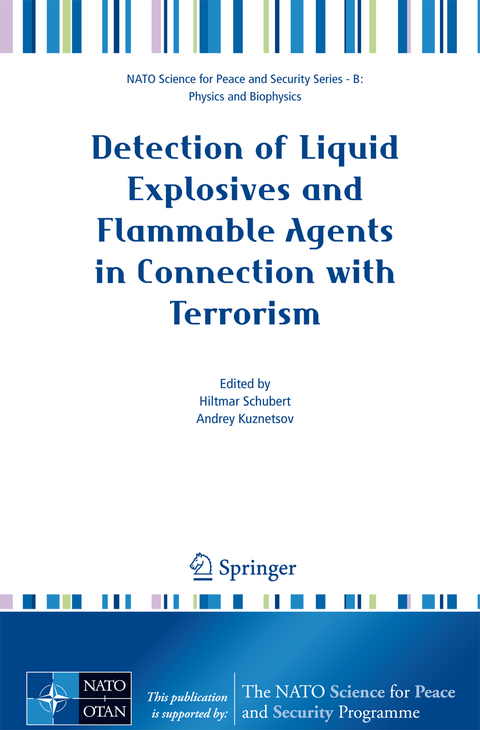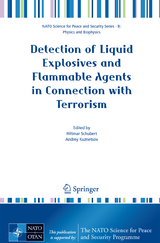Detection of Liquid Explosives and Flammable Agents in Connection with Terrorism
Springer-Verlag New York Inc.
978-1-4020-8464-5 (ISBN)
The Terrorist Pallet of Liquid Explosives and Flammable Fuels.- Overview of Liquid Explosives’ Detection.- Chemistry and Properties of Liquid Explosives.- What’s Special About Liquid Explosives?.- Search of Explosives in Vehicles by Using Tagged Neutrons.- Optimization of Hardware for Tagged Neutron Technology.- Detection of Liquid and Homemade Explosives: What Do We Need to Know About Their Properties?.- Detector of Hazardous Substances Based on Nanosecond Neutron Analysis.- Some Detection Procedures for Liquid Explosives.- Detection of Explosives Using Nuclear Resonance Absorption of Gamma Rays in Nitrogen: A Russian/US Collaboration.- A Device for Detecting Concealed Explosives.- Trace and Bulk Detection of Explosives by Ion Mobility Spectrometry and Neutron Analysis.- Possibilities of Liquid Explosives Countermeasures at Airports.- Close-Range and Standoff Detection and Identification of Liquid Explosives by Means of Raman Spectroscopy.- Directional Detection of Nitrogen and Hydrogen in Explosives by Use of a DD-Fusion-Driven Thermal Neutron Source.- Discrimination of the Explosives from Other Materials by Using the Tagged Neutron Beam.- Detection of Liquid Explosives and/or Flammable Liquids by Different Techniques.- Hilbert Spectroscopy of Liquids for Security Screening.- Liquid Explosives – The Threat to Civil Aviation and the European Response.- Miniaturized Photonic Sensor Devices for Real Time Explosive Detection.- Conceptual Design of a Hand-Held Liquid Detector Based on Compton Scatter.
| Reihe/Serie | NATO Science for Peace and Security Series |
|---|---|
| Zusatzinfo | XI, 233 p. |
| Verlagsort | New York, NY |
| Sprache | englisch |
| Maße | 155 x 235 mm |
| Themenwelt | Naturwissenschaften ► Chemie ► Analytische Chemie |
| Naturwissenschaften ► Chemie ► Physikalische Chemie | |
| Naturwissenschaften ► Physik / Astronomie ► Angewandte Physik | |
| ISBN-10 | 1-4020-8464-1 / 1402084641 |
| ISBN-13 | 978-1-4020-8464-5 / 9781402084645 |
| Zustand | Neuware |
| Haben Sie eine Frage zum Produkt? |
aus dem Bereich




